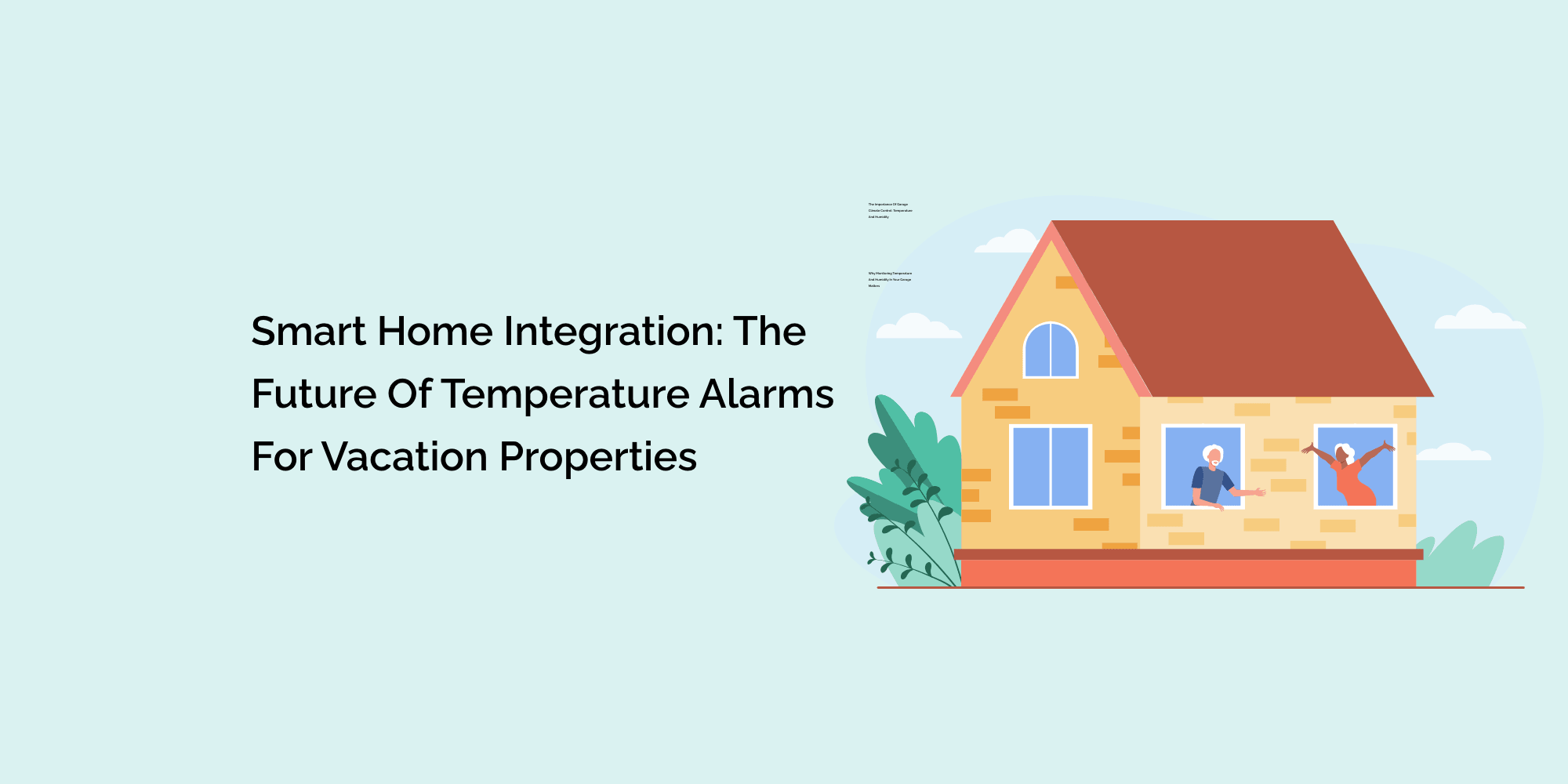Innovative home technology has revolutionized how we interact with our homes, offering convenience, efficiency, and enhanced security. Regarding vacation properties, intelligent home integration can elevate temperature alarms to a new level. By seamlessly integrating temperature alarms with intelligent home systems, vacation homeowners can enjoy greater control, automation, and peace of mind. In this blog, we will explore the concept of smart home integration and its role in the future of temperature alarms for vacation properties. We will discuss the benefits of innovative home technology, the integration possibilities with temperature alarms, and practical applications for an enhanced vacation property experience. By leveraging the power of smart home integration, homeowners can maximize energy efficiency, improve security, and simplify temperature management in their vacation homes.
Understanding Smart Home Integration
We will introduce the concept of smart home integration, explaining how it enables various devices and systems to communicate and work together seamlessly. We will discuss the benefits of innovative home technology, including convenience, energy efficiency, and enhanced control over home systems. Understanding the potential of smart home integration sets the stage for exploring its applications in temperature alarm systems.
Benefits of Smart Home Integration for Vacation Properties
We will discuss the specific benefits of smart home integration for vacation properties. These include remote control and monitoring capabilities, energy efficiency optimization, enhanced security features, and streamlined temperature management. We will highlight how intelligent home integration enhances the vacation home experience and provides homeowners peace of mind.
Integrating Temperature Alarms with Smart Thermostats
We will explore the integration of temperature alarms with smart thermostats, one of the critical components of an intelligent home system. This integration allows homeowners to monitor and control temperature settings remotely, set personalized schedules, and receive real-time alerts and notifications based on temperature alarm data. We will discuss the energy-saving potential and increased comfort that arises from this integration.
Remote Monitoring and Control via Mobile Apps
We will explore the benefits of remote monitoring and control enabled by intelligent home integration. Homeowners can utilize mobile apps to access temperature alarm data, adjust settings, and receive alerts on their smartphones or tablets from anywhere in the world. This level of control provides peace of mind and ensures that homeowners can respond promptly to temperature-related issues in their vacation properties.
Voice Control and Automation with Virtual Assistants
We will explore the integration of temperature alarms with virtual assistants, such as Amazon Alexa or Google Assistant. This integration enables voice commands for temperature adjustments and control automation based on predefined scenarios or occupancy detection. Homeowners can enjoy hands-free control and create personalized routines for optimal comfort and energy efficiency.
Geofencing and Occupancy Detection
We will discuss how intelligent home integration allows for geofencing and occupancy detection capabilities. The system can detect when homeowners or guests are approaching or leaving the property using GPS technology or motion sensors. This triggers temperature adjustments to ensure comfort upon arrival and energy savings when the property is unoccupied.
Enhanced Security Features
We will explore the security benefits of smart home integration with temperature alarms. Integration with security systems, such as door/window sensors or security cameras, allows for comprehensive property monitoring. Homeowners can receive alerts for temperature deviations and potential security breaches, ensuring the safety of their vacation homes.
Energy Optimization and Cost Savings
We will highlight how smart home integration with temperature alarms contributes to energy optimization and cost savings. By leveraging occupancy detection, weather data, and energy usage patterns, the system can automatically adjust temperature settings for maximum efficiency. This results in reduced energy consumption and lower utility bills.
Data Analytics and Insights
We will discuss how intelligent home integration enables data analytics and insights. Temperature data, occupancy patterns, and energy consumption trends can be analyzed to provide valuable insights for further energy optimization and informed decision-making. Homeowners can identify trends, set goals, and track their progress toward achieving energy efficiency in their vacation properties.
Future Trends and Possibilities
We will explore emerging trends and possibilities in smart home integration for temperature alarms. This includes advancements in artificial intelligence, machine learning algorithms, and predictive analytics to create even more intelligent and adaptive systems. We will discuss potential innovations that can further enhance the functionality and benefits of temperature alarms in vacation properties.
Certainly! Here are some frequently asked questions (FAQs) about smart home integration and temperature alarms for vacation properties:
What is smart home integration?
Smart home integration refers to connecting and coordinating various devices and systems within a home to work together seamlessly. It allows homeowners to remotely control and monitor different aspects of their homes and automate tasks for convenience and efficiency.
How can intelligent home integration benefit vacation properties?
Smart home integration offers several benefits for vacation properties. It allows homeowners to remotely monitor and control temperature settings, enhance security features, optimize energy usage, and simplify temperature management, providing convenience and peace of mind.
How does the integration of temperature alarms with intelligent thermostats work?
Integrating temperature alarms with smart thermostats enables homeowners to receive real-time alerts and notifications based on temperature alarm data. They can remotely monitor and adjust temperature settings through mobile apps, ensuring optimal comfort and energy efficiency in their vacation properties.
Conclusion
Smart home integration is transforming how we manage temperature control in vacation properties. By seamlessly integrating temperature alarms with intelligent home systems, homeowners can enjoy the benefits of remote monitoring, enhanced security, energy optimization, and simplified temperature management. The future of temperature alarms lies in the power of smart home integration, offering unparalleled convenience, comfort, and peace of mind. As technology advances, homeowners can expect even more innovative features and possibilities in the realm of smart home integration. By embracing this future, vacation homeowners can elevate their property experience, optimize energy usage, and create a truly connected and intelligent vacation home environment.








